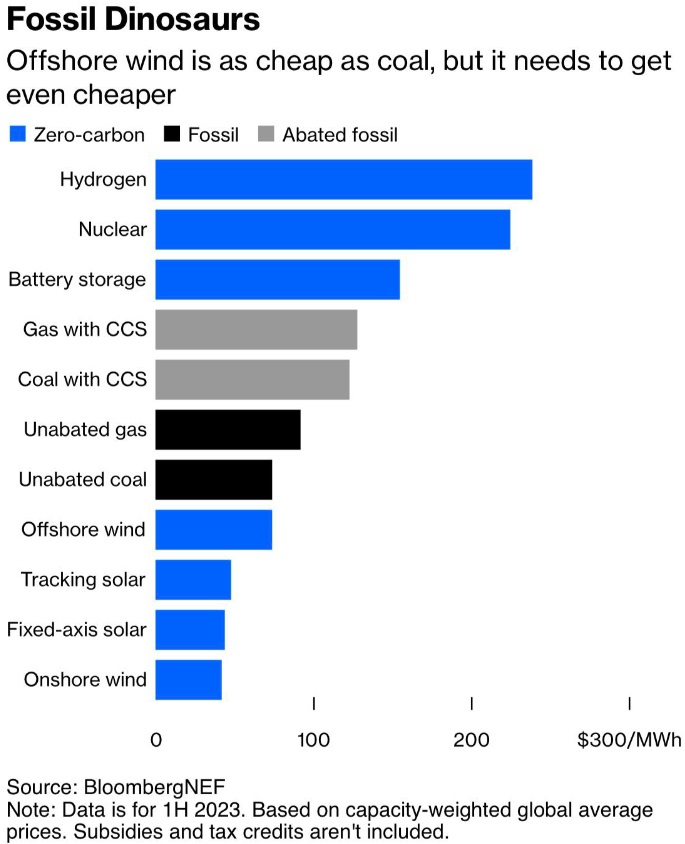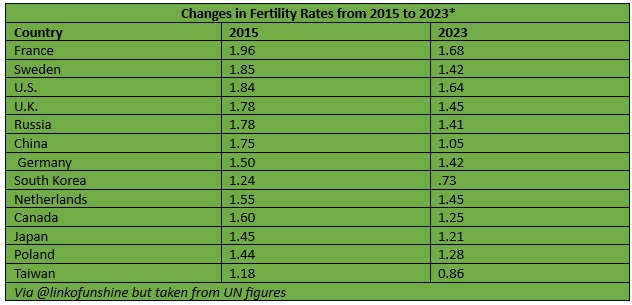A little over a year ago, we asked does an “AI revolution loom?” Back then it was ChatGPT 3. Today, Google and Microsoft are in the game and we’re now up to ChatGPT 4. We use these new AI tools on a regular basis, from assisting with writing appeals to state government, to helping us plan vacation itineraries to generating images for presentations and articles. More and more applications are created using these AI tools. Just yesterday, we saw the below video of “Channel 1”, an AI-generated newscast. As you can see at the one minute and 35 second mark, the anchors and reporters can deliver the news in any language.
This news application raises all sorts of questions, including ethical ones but it points to how fast this revolution is moving. It’s becoming increasingly difficult to predict with any accuracy whatsoever what our world will look like in ten years, or even five years. It’s possible AI technology is going to reach some technical barriers and stop progressing. But if it does keep progressing quickly, we’re entering an exciting and probably very weird era, and perhaps a dangerous one. As we prepare for it, we remind you that clean energy is now the cheapest alternative, there will be fewer of us using energy and China’s innovation is quantity over quality. It’s this week’s International Need to Know, tentatively welcoming our robotic overlords of international information and data.
Program note: We’ll be busy snowshoeing next Thursday, avoiding bears and global events. International Need to Know will be back on December 21st.
Without further ado, here’s what you need to know.
Young India Update
Before we get into our usual three stories, lots of folks commented on our stat from last week that one in five people under the age of 25 in the world are from India. We asserted the 21st Century is likely to be the India Century and its influence will manifest itself in many ways. Readers alerted us this is already happening, including here in Seattle. For example, one reader sent us a listing of movies at a multiplex in Bellevue, where there is a large number of Indians living who work in the local tech industry. Three of the movies are in Telugu, one in Hindi and one in Temil. He notes that when going to local parks you see people playing cricket. The Microsoft campus has a large cricket field. Given the state of our once beloved Seattle Mariners baseball team, we may ourselves be turning to cricket. Either way, the world will increasingly look more Indian culturally, economically and socially.
Clean Is Now Cheaper Than Dirty
With the UN Climate Change Conference just finishing in the United Arab Emirates, lots of concern has been expressed that we won’t achieve climate change goals. But here’s some continued good news on the clean energy generation front via Science is Strategic, “After decades of radical declines in cost, unsubsidized solar & wind are now the cheapest forms of available power.” You can see this in their first chart below and in the second chart you can see the rapid decrease in costs. Likely we’ll see a continued drop in costs throughout the 2020s. It’s at this point where lots of people will state this decrease in costs doesn’t matter because wind and solar power are intermittent. But look at that second chart again—battery costs are coming down too. Battery prices are now $139 per kw hour. That’s down 90 percent from 2010. Regardless of what happened or did not happen at COP, more folks will be turning to solar and wind power because it will save them money.
Fewer People Will Be Using That Energy
Some people obsess over cars, others over fashion. Us? We obsess over demography and boy did we see some crazy numbers last week. We all know fertility rates have been falling but X’er Basil (we verified their numbers) did a comparison of fertility rates in 2015 to today and it’s quite startling as you can see below. South Korea might as well just post a “Country for Rent” sign at its borders or plan to turn into a wildlife refuge next century. In fact, South Korea is the only country with a lower fertility rate than China. Turning to Europe, Poland’s fertility rate is down to 1.28 and Germany’s is down to 1.42. Falling fertility rates will shape our world as much as any other trend taking place on our tiny rotating orb right now. It’s why we’ve been saying a Great Immigrants Competition is coming. Rich countries are going to run out of people and will need to compete to be attractive places to live and work. This is ultimately what will force places like China to change their governing systems.
China Corner: Quantity Over Quality
Battalions of experts, policymakers and interested onlookers are watching the U.S.-China tech war to see who will come out on top. One of the challenges for these troopers is how to measure innovation. Patents are the go-to tool for many but patents are not a good way to measure innovation. Yuen Yuen Ang, who wrote one of our favorite books in the last decade about China, is lead author of an article which quantifies the problem with using China patents as a measurement. She and her co-authors “analyzed an original dataset of 4.6 million patents filed in China from 1990 through 2014*” and distinguished between quantity and quality of the patents. As you can see in the first chart below, China produced lots of patents during that period but the second chart shows the quality of them declined. They measure quality of patents by patent novelty, “the first combination of two domains of knowledge.” Why was there a decrease in quality patents after 2006? The paper asserts, “one key culprit is bureaucratic gaming of patent targets, along with wasteful use of subsidies and public resources, and a proliferation of duplicative, junk patents.” The paper and Ang do not state that China is not innovative but rather that “Beijing’s innovation drive is enormous in scale but low in productivity.” The whole paper is worth your time to read.
*The paper notes that after 2006 is when China’s government put an emphasis on domestic innovation, thus the reason for analyzing that time period.







